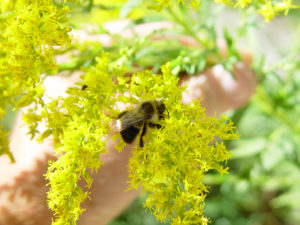
Some people like a perfectly green carpet of grass; I welcome the biodiversity of clover, dandelions and other weeds (although I could do without the painful thistles). Of course, I also notice many pollinating insects including bumblebees seem to enjoy visiting the flowers that bloom in the lawn. However, concerns have arisen over the use of insecticides and the health of our pollinators. There has been extensive talk about the collapse of honeybee colonies and declining populations of native pollinators like bumblebees. One area of research is the use of insecticides, especially neonicotinoids, and how they affect bees but most studies were done in lab environments, not in a lawn where the bees would collect nectar from flowering plants. Larson, Redmond and Potter decided to study both clothianidin, a neonicotinoid insecticide, and chlorantraniliprole, an anthranilic diamide, and examine how the insecticides affected bumblebees that foraged on treated lawns.
Neonicotinoids are systemic insecticides that are potent selective agonists of nicotinic acetylcholine receptors in insects, and are applied as sprays or granules during the spring for control of root-feeding grubs and other pests. Anthranilic diamides are a new class of insecticides that activate insect ryanodine (calcium channel) receptors and cause lethal paralysis in sensitive species. Chlorantraniliprole shows low acute bee toxicity, a promising development, but this anthranilic diamide has not been tested in the field.
Continue reading “Can We Have Healthy Bees and Green Lawns?”